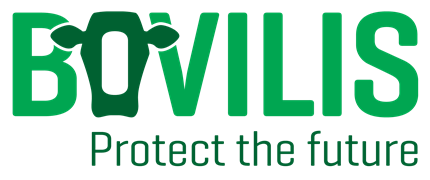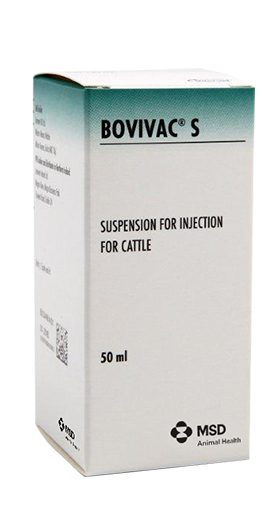

Salmonella
BOVIVAC® S
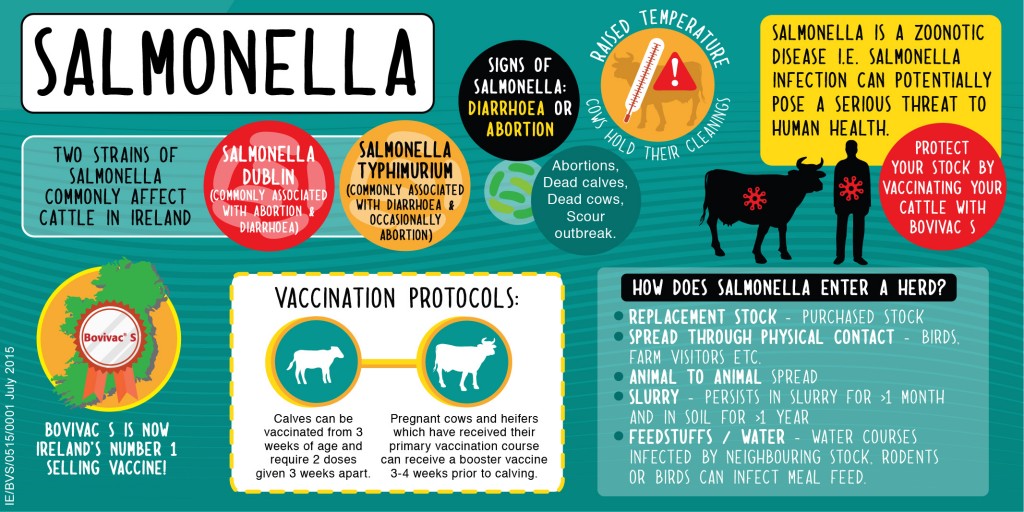
Salmonella control in cattle
Salmonellosis is a disease caused by bacteria, of which numerous types exist. In Ireland cattle are most frequently infected with two types of Salmonella species, Salmonella dublin and Salmonella typhimurium.
What are the signs of salmonellosis?
Infected animals can suffer from diarrhoea or abortion. In most herds either one syndrome or the other is seen. Less often, herds show signs of both syndromes.
Diarrhoea
Signs of diarrhoea in affected cattle can be mild but frequently animals have a raised temperature, extremely watery diarrhoea, are dehydrated and can die as a result. A condition seen in calves on farms with endemic infection is called Terminal dry Gangrene.
Affected animals may not have previously shown any signs of scour but after an outbreak these calves develop gangrene of the feet, tips of the ears and the tail.Carrier animals can be a source of infection to others and these carrier animals are more likely to shed Salmonella during periods of stress such as at dry off or housing or if affected by other diseases such as BVD or liver fluke infestation. Chronic cases of salmonellosis may appear as ill-thrifty animals.
Abortion
Usually, abortion associated with Salmonellosis occurs in cows infected with Salmonella Dublin in Ireland. Timing of Salmonella associated abortion is from the fifth to the eighth month of pregnancy. Infection of the aborting cow can have occurred up to 12 weeks before the abortion is seen. Aborting cows are often sick with a raised temperature and hold their cleanings. Some cows do die as a result of this infection.
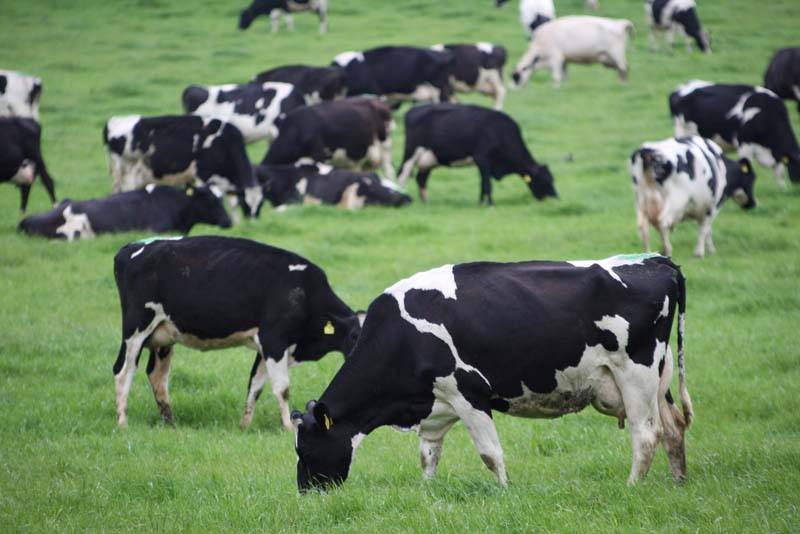
Diagnosis
Send all aborted calves and their cleanings to the lab for post-mortem examination and testing. A blood sample from aborted cows can be useful for analysis. Salmonella species can be detected from dung samples but often the number of bacteria shed in faeces can be quite low which can make detection difficult. Isolate suspected cases and contact your attending veterinary surgeon for best advice.
Control of Salmonellosis in cattle
Ideally infected or carrier animals should be culled. However, detection of carrier animals is extremely difficult rendering this aspect of control difficult to apply on farm. Herds which purchase animals are at risk of purchasing carrier animals. Contact with neighbouring cattle also increases the risk of spread so maintenance of boundary fences can reduce the threat of introduction of disease. Visitors should be kept to a minimum on farm and access to stock restricted.
Vaccination is available in Ireland to protect cattle against the effects of infection with both Salmonella Dublin and Salmonella typhimurium. Calves can be vaccinated from 3 weeks of age and require 2 doses given 3 weeks apart. Pregnant cows and heifers which have received their primary vaccination course can receive a booster vaccine 3-4 weeks prior to calving.
Zoonosis
Salmonella infection can potentially pose a serious threat to human health. Control of disease within a herd therefore protects both the stock and the stockperson. Surveillance of the herd disease status by testing of aborted calves or affected animals allows prompt diagnosis and is a useful monitoring tool. Biosecurity measures including maintain a closed herd and good boundary fences further protects the herd. Vaccination provides the animals with immunity to reduce infections and may reduce Salmonella typhimurium contamination of the environment.
Product Focus
Related Video
To activate the video player please allow cookies in category ‘Performance and Operation’ and refresh this page.
Related Articles
- Technology for Profit competition #TimeForTech
 We’re looking for Irelands most innovative dairy farmers! #TimeforTech Following the success of our Prevention for Profit campaign we’re excited to launch the “Technology for Profit” competition for 2025.
We’re looking for Irelands most innovative dairy farmers! #TimeforTech Following the success of our Prevention for Profit campaign we’re excited to launch the “Technology for Profit” competition for 2025. - Flies – Nuisance by name, nuisance by nature
 With temperatures slowly on the rise, next on the agenda – fly season. Impact on production and spread of disease Anyone who has worked with cattle during the summer months needs little reminding of the annoyance which flies can cause. They can be responsible for a state of unrest in the parlour for both cows … Read more
With temperatures slowly on the rise, next on the agenda – fly season. Impact on production and spread of disease Anyone who has worked with cattle during the summer months needs little reminding of the annoyance which flies can cause. They can be responsible for a state of unrest in the parlour for both cows … Read more - Reducing Abortion Rates in Your Flock: Enzootic Abortion of Ewes and Toxoplasmosis
 Eleanor Brady, MVB MRCVS, Ruminant Veterinary Manager, MSD Animal Health Many Irish flocks will experience a few abortions each year, but how many abortions is too many? Targets for abortion and overall empty rate are set at <2% and <5% respectively, although many flock owners accept rates higher than this. Approximately one third of lamb … Read more
Eleanor Brady, MVB MRCVS, Ruminant Veterinary Manager, MSD Animal Health Many Irish flocks will experience a few abortions each year, but how many abortions is too many? Targets for abortion and overall empty rate are set at <2% and <5% respectively, although many flock owners accept rates higher than this. Approximately one third of lamb … Read more
Sign up to Bovilis® product and event information
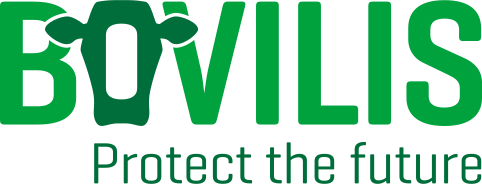
MSD Animal Health
Red Oak North, South County Business Park, Leopardstown,
Dublin 18, Ireland
vet-support.ie@msd.com
PHONE
CATTLE DISEASES
